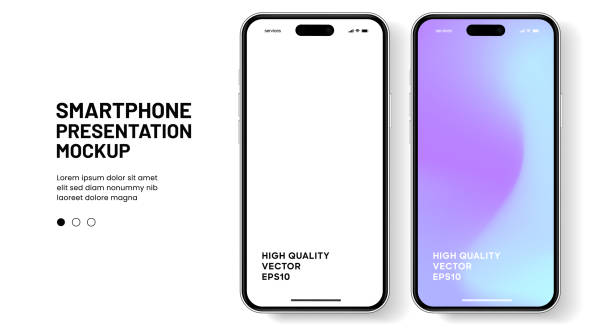The Smartphone Revolution: A Comprehensive Exploration
In the fast-paced and ever-evolving landscape of technology, one device stands out as an emblem of connectivity, convenience, and communication—the smartphone. This compact, multifunctional gadget has become an integral part of our daily lives, revolutionizing the way we work, communicate, entertain ourselves, and navigate the world around us.
Evolution of the Smartphone: A Brief History
The inception of the smartphone can be traced back to the early 1990s when devices like the IBM Simon Personal Communicator combined the functionalities of a mobile phone with those of a PDA (Personal Digital Assistant). However, it was the launch of the first iPhone by Apple in 2007 that marked a significant turning point. The iPhone’s intuitive touch interface, robust app ecosystem, and sleek design set new standards for the industry, influencing the development of subsequent smartphones.
Key Features and Components
Smartphones are characterized by a myriad of features and components that make them versatile and indispensable. Here are some key elements:
- Touchscreen Interface: The touchscreen is a central component, allowing users to interact with the device through taps, swipes, and gestures. This intuitive interface has become synonymous with modern smartphones.
- Operating System: Smartphones run on operating systems like Android (Google), iOS (Apple), or others. These systems provide the framework for the device’s functionalities and support a vast array of applications.
- Applications (Apps): The proliferation of apps has transformed smartphones into powerful tools for various purposes. From productivity and communication to entertainment and gaming, apps enhance the user experience and functionality.
- Camera: The integration of high-quality cameras has turned smartphones into versatile imaging devices. Users can capture photos and videos, edit them on the device, and instantly share them through various platforms.
- Connectivity: Smartphones facilitate seamless connectivity through technologies like 4G and 5G, allowing users to access the internet, make video calls, and share content on the go.
- Biometric Security: Many smartphones incorporate biometric features like fingerprint sensors or facial recognition for enhanced security, providing a convenient and secure way to unlock the device.
- Sensors: Smartphones are equipped with a variety of sensors, including accelerometers, gyroscopes, GPS, and ambient light sensors. These sensors enable features like auto-rotation, location-based services, and augmented reality applications.
- Battery: Advances in battery technology have improved the endurance of smartphones. Despite the power-hungry nature of modern applications, smartphones are designed to provide sufficient battery life for a day of typical usage.
Impact on Communication and Connectivity
The most fundamental function of a smartphone is to facilitate communication. With features like calls, text messaging, and a myriad of messaging apps, smartphones have made communication more accessible and instantaneous than ever before. Social media platforms integrated into smartphones enable users to share their lives with a global audience, fostering connections and relationships across distances.
Moreover, the advent of mobile internet connectivity has transformed smartphones into portable information hubs. Users can access a wealth of information, conduct research, and stay updated on news and events in real-time. This democratization of information has profound implications for education, business, and personal development.
Productivity on the Go
Smartphones have redefined the concept of work and productivity. With the ability to access emails, documents, and collaborative platforms, professionals can stay connected and productive even when away from their desks. Mobile productivity apps enable tasks like document editing, project management, and virtual meetings, enhancing efficiency and flexibility.
Entertainment at Your Fingertips
Entertainment is another realm profoundly impacted by smartphones. With high-resolution displays, powerful processors, and immersive sound systems, smartphones have become primary devices for consuming media. Streaming services for music, movies, and TV shows are readily accessible, providing a personalized and on-the-go entertainment experience.
The gaming industry has also experienced a paradigm shift with the rise of mobile gaming. Smartphones with advanced graphics capabilities and responsive touchscreens offer a diverse range of gaming experiences, from casual puzzles to graphically intensive multiplayer games.
Challenges and Concerns
While smartphones have brought about remarkable advancements, they also pose challenges and raise concerns. One significant challenge is the issue of digital addiction. The constant connectivity and the allure of social media can lead to excessive screen time, impacting mental health and well-being.
Privacy is another concern, with smartphones collecting vast amounts of personal data. As these devices become more integrated into our lives, ensuring the security and ethical use of this data becomes a critical consideration.
The environmental impact of smartphone production and disposal is a growing concern. The extraction of rare earth materials for manufacturing and the accumulation of electronic waste pose ecological challenges that the industry must address.
Future Innovations and Trends
Looking ahead, the smartphone industry continues to evolve with innovations and trends that promise to shape the future. Foldable smartphones, augmented reality (AR), and virtual reality (VR) integration are among the emerging technologies. The development of AI-driven features and improvements in battery technology aim to enhance user experience and device efficiency.
The integration of 5G technology is set to revolutionize connectivity, providing faster data speeds and enabling the Internet of Things (IoT). Smartphones are expected to play a central role in the interconnected ecosystem of smart homes, cities, and industries.
Conclusion
The smartphone, born out of a convergence of technologies, has become an indispensable companion in our daily lives. Its impact on communication, productivity, entertainment, and various other facets of our existence is profound. As we continue to witness technological advancements and the integration of new features, the smartphone remains a symbol of innovation and connectivity, shaping the way we interact with the world around us. Balancing the benefits and challenges associated with smartphones will be crucial as we navigate an increasingly interconnected and digitized future.





